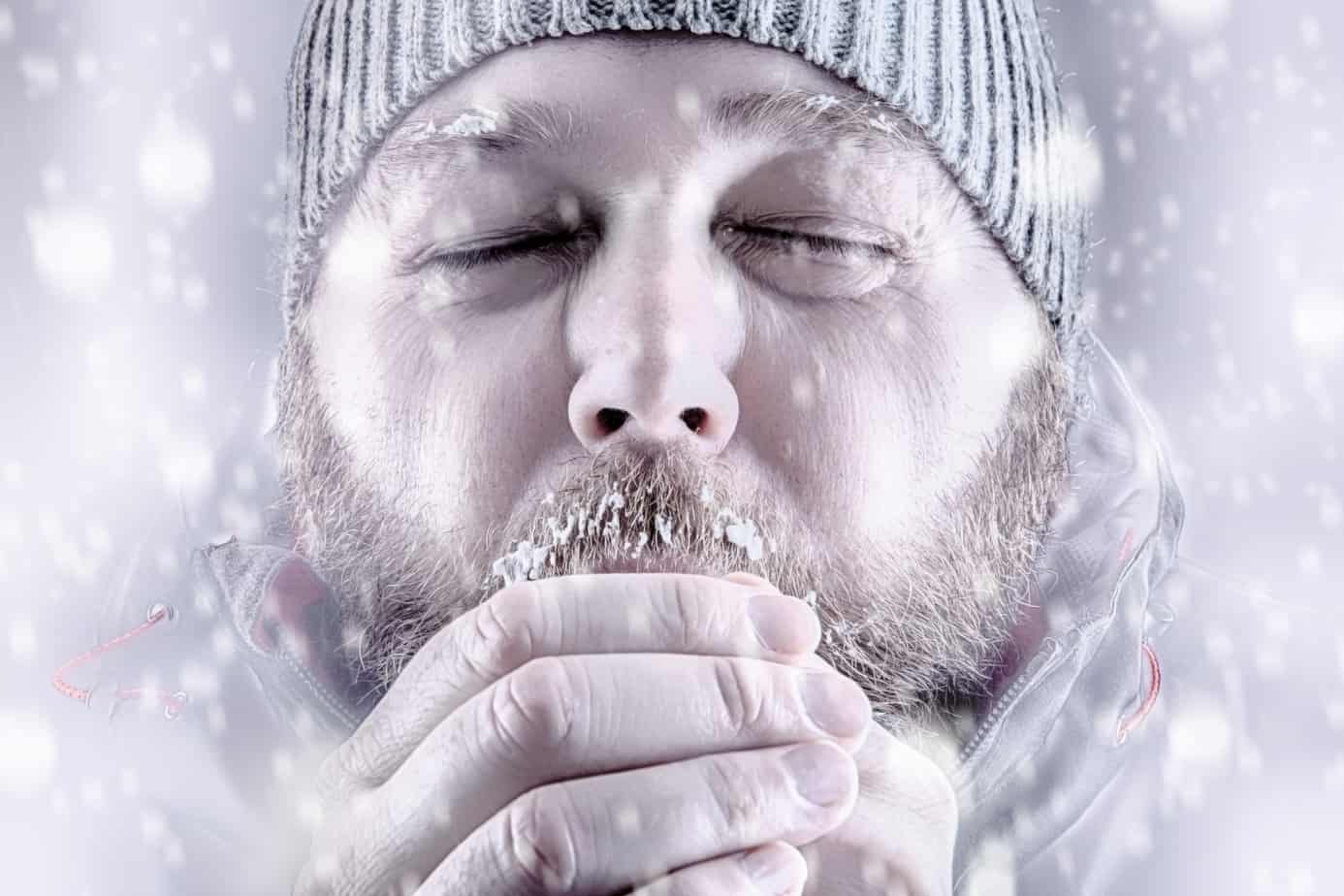Have you ever been caught in the cold without any protection? If so, then you know how dangerous it can be. But if you’re prepared with knowledge of what to do and how to react, your chances of survival drastically increase.
From learning about proper clothing needs to understanding the signs of hypothermia or frostbite, these key elements are essential for keeping safe when temperatures dip below freezing. With a bit of preparation and awareness ahead of time, you can stay warm and alive even during extreme winter conditions. We’ll also discuss ways to keep yourself sheltered from wind chill factors that can make an already chilly situation much worse.
No one should have to experience being stuck in frigid temperatures without the necessary gear or education on the dangers associated with such exposure. Therefore, take some time out now to read through our comprehensive guide on maximizing your chances of survival in cold weather, because nothing is more important than staying safe!
Understanding Hypothermia
The winter months can be a treacherous time when it comes to surviving in the cold. Hypothermia, or abnormally low body temperature, is one of the most serious risks that come with extreme cold weather conditions and needs to be taken seriously. To illustrate this point, consider the case of a young woman skiing who was found unconscious on the slopes after several hours outside in sub-zero temperatures.
Hypothermia symptoms include shivering, confusion, slurred speech, fatigue, and problems with coordination. It’s important to take steps for prevention if spending sustained periods of time outdoors in cold weather; dress appropriately by wearing multiple layers of warm clothing, keep dry by avoiding dampness, and stay hydrated as dehydration increases the risk for hypothermia.
Also crucial is being aware of signs such as disorientation or an irrational fearfulness that could indicate early stages of hypothermia before more severe cases develop. If someone does become hypothermic, then medical attention should immediately be sought out – warming up slowly at home isn’t recommended due to lack of medical supervision which can cause further complications down the line.
When dressing properly for cold weather conditions, we must not only focus on staying warm but also protecting ourselves from potential risks like hypothermia…
Dressing For Cold Weather Conditions
Dressing for cold weather conditions is key to maximizing your chances of survival. Layering clothes allows you to adjust the amount of insulation and wind protection as temperatures fluctuate. Cold weather essentials include a base layer, an insulating middle layer, and waterproof/windproof outerwear that fits snugly enough to trap heat but not so tight it restricts movement or circulation. When extreme cold temperatures are present, additional layers can be added for extra protection, such as balaclavas, neck gaiters, scarves, insulated pants/jackets, and gloves.
Your winter clothing should fit comfortably with room for air in between each layer; this will help keep you warm by trapping body heat within its fibers. It’s also important to wear colors that blend into the environment; bright colors tend to attract attention which may be dangerous in certain scenarios.
Lastly, make sure the materials used are lightweight yet durable enough to withstand the elements while still providing adequate warmth and protection against wind chill.
Staying hydrated and nourished is essential when surviving in cold weather conditions.
Staying Hydrated And Nourished
Staying hydrated and nourished is essential in cold weather. It’s important to be sure to drink plenty of water, as well as eat food that is high in calories, protein, and other nutrients. Eating a balanced diet can help maintain body temperature and provide energy for physical activities. Additionally, eating warm foods such as soups or stews can also aid in staying warm.
It’s especially important to make sure you’re drinking enough water if you are being physically active outdoors during the winter months. Dehydration not only increases your chance of developing hypothermia, but it can also sap your energy levels quickly. If possible, try to carry a thermos with hot tea or cocoa, which will help keep you hydrated while providing warmth from both its temperature and calorie content.
When planning what kind of meals to bring when participating in outdoor activities in cold temperatures, try to focus on bringing items that contain complex carbohydrates like whole-wheat pasta or brown rice which helps give your body sustained energy over time rather than just short bursts of energy found in sugary snacks or junk food.
Remembering to stay hydrated and nourished during cold weather will help increase your chances of survival significantly. With the right preparation, you’ll have an easier time avoiding frostbite by keeping yourself warm and energized.
Avoiding Frostbite
With the right preparation and safety measures in place, surviving cold weather can be possible. One of the main things to focus on is avoiding frostbite, a condition that occurs when body tissue freezes due to prolonged exposure to low temperatures.
Here are 4 tips for preventing Frostbite:
- Dress appropriately for the climate: Wear several layers of loose-fitting clothing as well as hats, mittens or gloves, scarves, and waterproof boots. Avoid wearing anything too tight or constricting because it reduces circulation.
- Stay dry: Make sure your clothes don’t get wet from rain, ice, snow, sweat, or any other water source since this will make you more susceptible to frostbite.
- Take breaks often: If you need to be outside in cold conditions for an extended period of time (such as during winter activities like skiing), make sure you take regular breaks so your body doesn’t become overexposed.
- Know the symptoms of frostbite: Being aware of what signs may signal frostbite is important; these include loss of feeling/color in extremities such as fingers and toes, numbness and tingling sensations, and red patches on the skin that turn white or grayish blue.
It’s also important to recognize that if left untreated, serious injury or even death could result from severe cases of frostbite, so taking steps to prevent it is critical. With these precautions taken into account, one can feel confident that their chances of survival in cold weather have increased significantly. By being knowledgeable about hypothermia signs next, individuals can further prepare themselves for staying safe outdoors during colder months.
Knowing The Signs Of Hypothermia
It is essential to understand hypothermia and recognize its symptoms in order to maximize your chances of surviving cold weather. Hypothermia occurs when the body’s core temperature drops below 95°F, typically due to exposure to cold temperatures or immersion in cold water for too long.
The signs of hypothermia include confusion and disorientation, slurred speech, shivering, fatigue, pale skin and lips, lack of coordination, shallow breathing, and a weak pulse. If you observe any of these symptoms in yourself or someone else during cold weather conditions, it is important to take action immediately.
Preventing hypothermia requires an understanding of how the body’s natural thermo-regulating system works, as well as taking certain steps to protect oneself against extreme cold conditions. Wearing several layers of clothing with waterproof outerwear can help prevent heat loss while being mindful not to overdress which can cause sweat that will lead to further cooling. Additionally, drinking warm beverages regularly and avoiding overexertion can reduce the risk of developing hypothermia while stranded outdoors in cold weather. However, if you are already experiencing some symptoms of hypothermia, it is best to seek medical attention right away, as worsening conditions may result in serious complications such as cardiac arrest or coma.
Therefore recognizing the signs of hypothermia early on is critical for one’s safety when facing adverse wintery conditions in outdoor settings like mountainsides or icy terrain areas. Taking preventive measures by dressing appropriately and monitoring physical responses carefully are key strategies for minimizing potential health risks associated with prolonged exposure to severe cold temperatures so that everyone has a better chance at survival no matter where they find themselves outdoors during colder months!
In Conclusion
It’s important to understand the risks of cold weather and how to protect yourself against them. This includes dressing appropriately for the conditions, maintaining your body temperature with food and water, and knowing when you’re at risk for hypothermia or frostbite. Taking a few simple steps can make all the difference in making sure that you survive any frigid experience unscathed.
Nowadays, we have access to so much information about surviving extreme cold temperatures that there really is no excuse not to be prepared if you find yourself in an icy situation. With just a little bit of knowledge under your belt, you’ll be ready to take on whatever winter throws at you like a boss! So don’t let Old Man Winter get the best of you; stay informed and stay safe out there this season.
Bottom line: Protecting yourself from potentially dangerous cold weather conditions doesn’t need to be complicated; by following these guidelines, staying aware of potential risks, and being prepared ahead of time, you can maximize your chances of survival in any wintry setting – hassle-free.

